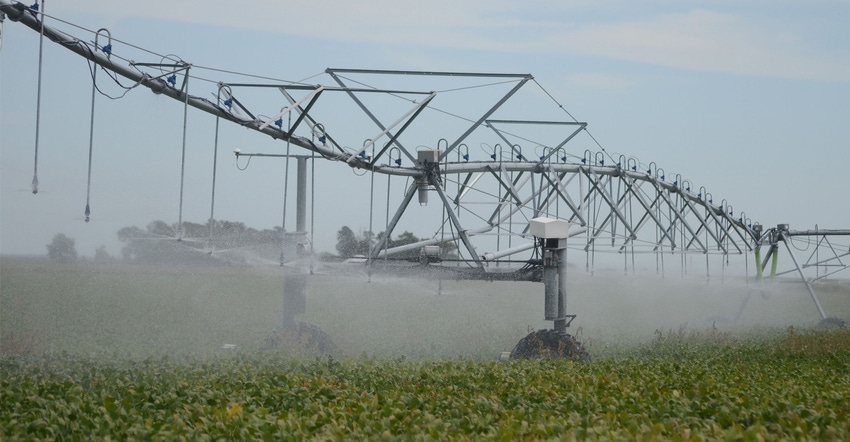
Ag journalists have been talking about the future of autonomous agriculture for years — even since the "retro-futuristic" days of the late 1960s, when predictions were made about what agriculture would look like in the 2000s that now seem laughable.
But while we've been talking about the autonomous future, agriculture — not to mention society as a whole — has been getting autonomous right under our noses, and I'm not just talking about driverless cars in the Silicon Valley or weed-killing robots in Europe.
In November 2018, Valmont Industries hosted an Ag Tech Summit, attended by members of the ag media, as well as ag tech companies and public officials from the U.S. and Israel. At the time, Valmont president and CEO Steve Kaniewski talked about the potential for the center pivot to be used for purposes beyond irrigation.
In February, that discussion culminated with the announcement of a partnership between Valmont and Israel-based company Prospera, with the ultimate goal of turning the center pivot into a fully autonomous crop management system.
From Nebraska's standpoint, the future of autonomous agriculture should be a bright one, if farmers are willing to adopt and use the technology — but more on that later. Think about it: Nebraska, the No. 1 irrigated state in the nation, had nearly 6.72 million center pivot-irrigated acres in 2008. And that number has only increased since. Nebraska and other pivot-irrigated states are set up for this kind of autonomy.
While Valmont's announcement pertains to anomaly detection, and down the road will include optimizing irrigation using the crop water stress index and pest and disease control, think of the number of ways the center pivot could be used for autonomous agriculture — and already is.
Sure, most of the decisions are producer-driven and not fully autonomous, but many irrigators in Nebraska have used telemetry to their advantage — being able to turn off center pivots remotely in the middle of a summer rain event.
It isn't just crop production that benefits. Pivots are often used with a Pivot Fence — a kind of portable fence system — invented by Nebraskan Jason Gross, as a kind of semiautonomous grazing system.
Pivots often are used for fertigation and chemigation, and research by the University of Nebraska-Lincoln in western Nebraska is even looking into using pivots, crop canopy sensors and aerial imagery for both variable-rate irrigation and variable-rate nitrogen in-season.
UNL research also has evaluated the potential for sensor networks to communicate with the pivot itself to adjust irrigation scheduling and VRI prescriptions in-season.
The challenge with full autonomy is drawing a line from the data collected to an actual prescription. And once that's established, full autonomy will take a lot of trust on the side of the grower. How many growers are hesitant to make the decision to not irrigate when a soil moisture sensor says their soil profile is full? I can attest based on what little experience I have that it's not an easy decision.
Adoption, as with any technology, likely will be a gradual process for that reason. However, with the potential for improved return on investment, savings in water, in input costs, and in time — not to mention the number of growers in the Great Plains that already use center pivots — there may be potential for a steeper adoption curve than usual.
And, with connectivity and telemetry, who knows what else the center pivot might be used for in autonomous agriculture? If Frank Zybach could see his invention being used on the scale it is for so many different purposes today, I'm sure he'd be amazed.
About the Author(s)
You May Also Like






